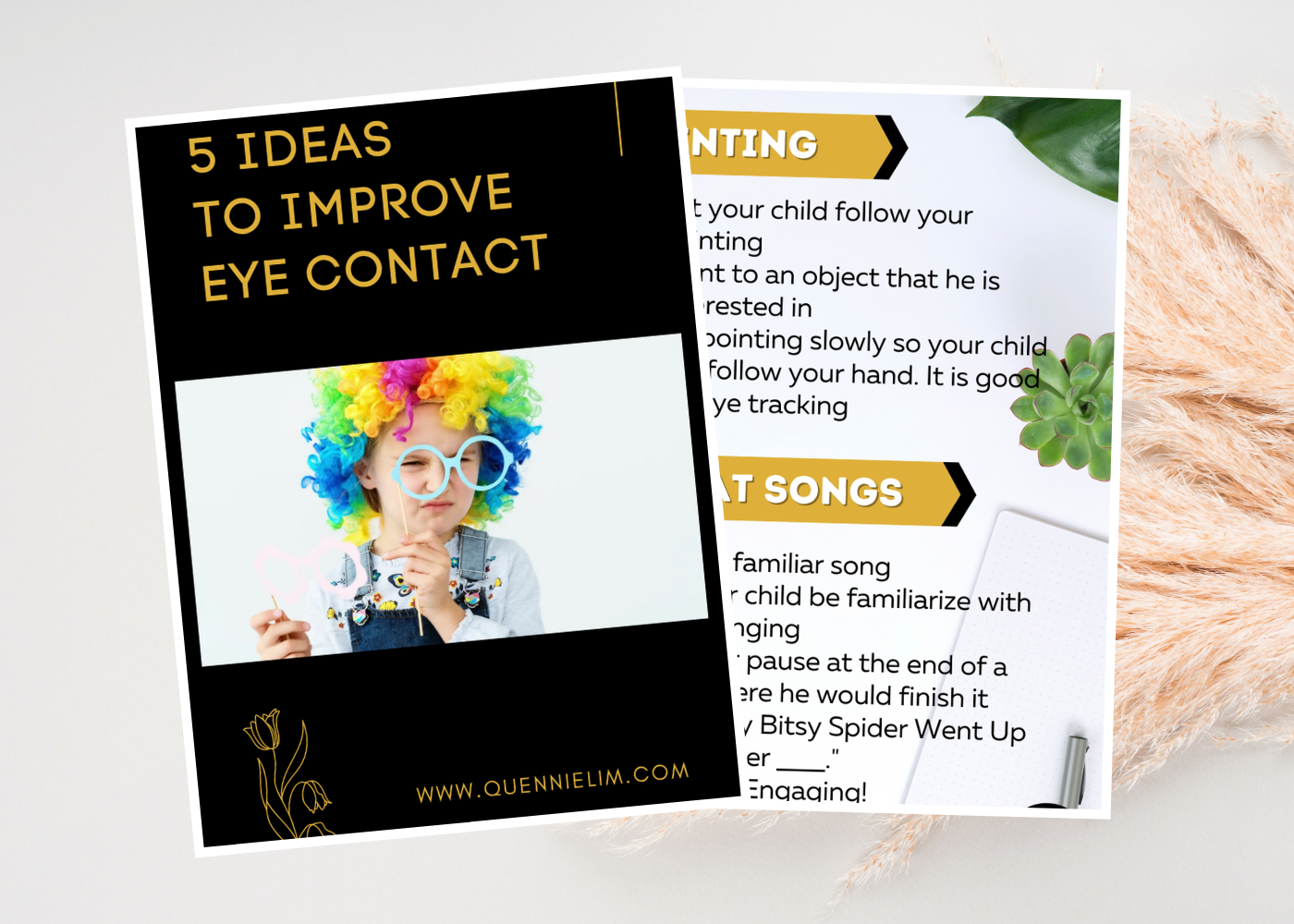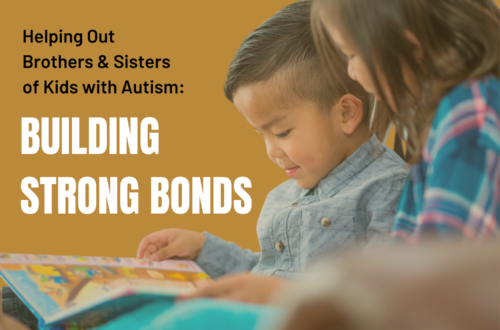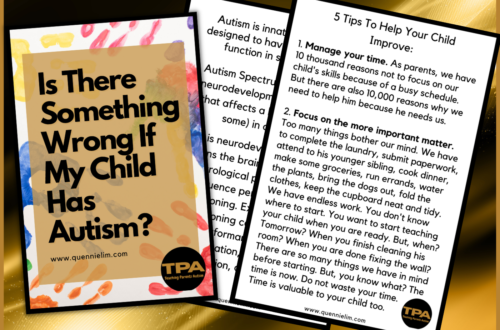Autism Eye Contact

I got 5 IDEAS to Improve Your Child’s Eye Contact!
Do you have a problem with your child looking at you?
Are you trying to talk to your child and wishing that he would look at you while you are talking or playing with him?
Eye contact is one of the difficulties in the social skills of children with an autism spectrum disorder.
In this blog article, I’m going to share with you how you can help improve your child’s eye contact.
However, teaching this is not a quick-fix solution to the problem.
Sometimes, there are parents’ expectations that are not met, thus they find it frustrating that their children haven’t met what parents expected.
There are many factors involved in a child’s thinking.
Teaching eye contact involves a lot of muscle control, sensory stimulation, neuron connections, and other factors.
Sometimes, your child may feel overstimulated when looking at someone’s eyes. Avoiding them feels better and safer for your child.
But other children with an autism spectrum disorder can improve this area in a short span given early intervention and support.
As parents, you need to continue what schools and therapists do so that they can generalize the skills taught to them in a home setting.
Generalization is another topic discussed in another discussion.
Generalization is very important for children with autism spectrum disorder as they need to practice the skills in different settings. This is connected to their lack of flexibility, another characteristic of autism.
Now, here are your 5 IDEAS to improve your child’s eye contact.
1. SLOW POINTING
Put some items 5 feet away from your child. Bend down until you are at your child’s eye level. Start to play and touch her toys. Move away or cover her toys slowly and intentionally point to the ‘object’ that you prepared and make an “awe” face to exaggerate it. LET YOUR CHILD FOLLOW YOUR POINTING!
Remember it is the skill of following your pointing that you need to teach.
This is the beginning of social interaction which involves eye tracking. It is to catch her attention and intentionally look at you eventually.
Your child may not look at the object in the beginning, but the first time will always be hard.
Don’t give up!
Try and try until your child gets it.
And continue doing until he gets the idea of FOLLOWING YOUR POINTING.
You can modify this by making it simple. You can start with the object (or anything he likes, can be food, favorite toy, or puzzle pieces) and place this object (without him noticing it) in front of him where he can easily spot it later on when you do the pointing.
Make it fun! Enjoy it with your child. Do not force as it will lead to demotivation.
2. Repetition of Songs
Follow the songs from youtube! I bet, your child is familiar with one song played on youtube! Right?
Sing a familiar song that your child likes.
Most of the kids like “Incy Wincy Spider!” or “One Little Finger” or “Wheels on the Bus”.
Use these songs to interact with them!
Repeat these songs 2 to 3 times a day. It can be during bedtime or changing clothes after a shower.
Repeat these songs. Once your child is used to you singing these songs during his routine, stop at the end of a line where he is expecting you COMPLETE.
For example, let me sing to you… (ahem…)
“Incy Wincy Spider, went up the water ssssss….” (look at your child and wait for him to look back at you!)
Because he is expecting you to say that magic word! SPOUT! “Where is my spout mommy?!!!)”
When he looks at you then say the SPOUT word! (That becomes his reward for looking at you!)
Well… some kids won’t look at all… It’s okay, there’s another day to do that again.
Better luck next time!
But the song won’t end there… continue…
“Down came the rain and wash the spider Aaah….. “ (pause again! Wait… Wait… Wait! Wait for your child to look at you!)
“Where is my OUT, MOMMY!” then when your child looks at you to say the magic lyric again!
Do you get the idea?
Do this even if your child hears your voice (and gets sick of it… just kidding!) many times!
It is the interaction that you are developing until he grows up!
Modify! Change the song, change venue, change person, change the tone of voice, change the speed (???) of your song… make it slow, make it fast, make it super slow or super fast!
I hope you will do this with your child. This is one of my favorite ways to develop eye contact.
3. Here’s number 3!!! READY, SET, GO!
Ready! Ssssset! ….. (pausing)
Ready! Sssssset! …… (I’m pausing again)
(You are not looking!) Ready! Ssssset! …. (Now you look at me!) GOOOOOOO! (I’m so happy you look!!!)
Do you get the point?
Just like the song, you have to pause at the end!
But… you can’t do this if your child is not familiar with the idea yet!
To introduce first!
Keep playing with your child and use ready, set, go!
Once you introduce them for many days, he is already used to it!
Then, you can stop and pause after the “SET” and let him look at you!
This is one of my favorites too! I hope you like it too!
4. Exaggerate!
BIG SMILE! MOUTH WIDE OPEN! EYES WIDE! NOSE BIGGER! Or….
Mouth sooo down! Eyes about to cry! Sniffing! Sniff! Sniff! Or…
Teeth grinding, I can see your teeth like you are going to eat me! Eyes very big and angry!
EXAGGERATE!
Your child needs to know your facial expressions.
This is one of the difficulties of children with autism spectrum disorder… reading facial expressions!
Being exaggerated will help them see your emotion.
Say if you are sooo happy! Or feels very angry! Or heartbroken!
Your child needs to understand emotions.
I know in the beginning it will feel like you’re crazy… but believe me, your child needs to know these expressions more accurately.
Most of the days, your child sees normal facial expressions which he may not understand other people’s emotions.
But, your child needs to learn these.
Knowing different emotions from real people will help him look at you and develop eye contact.
Clowns are best at this! Be a clown when you are with your child! He would love it!
You may feel like “WHAT WILL OTHER PEOPLE SAY I’M MAKING SILLY FACES?”
Well… you can do that at home, they will understand. In public, you can still do it but I know it won’t be as exaggerated as when you are at home!
Make sure to generalize with other members of the family. Just one facial expression is fine.
Do this when you are playing with your child, doing his daily routine, dropping a toy on the floor (Make an “Ohhh!” face!).
When your child is biting food… pretend you are also going to bite his food!
Enjoy the moment with your child!
5. Eye-level
When you want to say something to your child, (even if he is not looking at you), bend down at his eye level so that he does not need to look up at you.
If you are playing with him, lie down where your face is lower than his.
When he is changing clothes, put him higher (on a stable safe chair or bed) where your eyes are at the same level.
When you are giving him food, try to lean forward while putting food on his plate so that he sees your face (it does not need to be exactly your eyes but around your face is still good!)
You know I always give you a downloadable freebie so it’s easy to remember!
There’s your 5 IDEAS to Improve Autism Eye Contact!
I hope you learn something new today.
And I hope you can apply strategies In here!
Share this with your friends so that they will also learn from here too!
‘Til next time again!
AUSOME!





